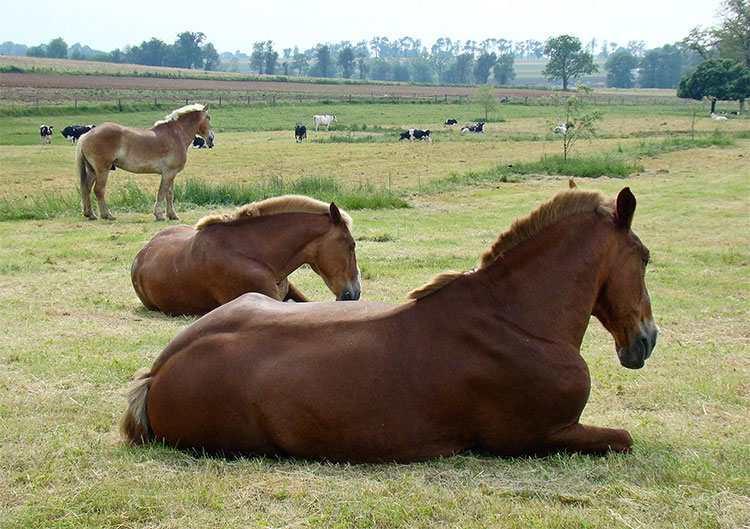Last Updated on September 16, 2022
Casts are an essential part of the healing process for a horse’s limbs. They allow the injured limbs to heal more quickly. However, they can be dangerous, causing muscle damage and circulatory shock. Learn more about the different types of casts and how to tell if your horse is in need of one. If you notice any of these symptoms in your horse, call your veterinarian right away.
Casts are used to protect injured limbs
While other animals can tolerate a cast, horses have very little room for error when it comes to fitting and positioning. Furthermore, horses generate extreme forces when they move, so a cast must be strong enough to resist the forces. Most types of casts incorporate the entire hoof for stability. The horse must be confined to a stall during treatment and monitored regularly. It is important to follow the veterinarian’s instructions while the horse is in a cast.
The cost of a cast is initially more than bandaging a horse, but the costs can quickly add up if multiple bandages are used. Moreover, horses with severe injuries can become agitated during the recovery process after anesthesia. This puts both the horse and its handlers at risk. In addition, casts can lead to laminitis, which is a common consequence of a cast-induced wound. However, casts are cost-effective in the long run if they are carefully monitored.
A cast can be applied to an anesthetized horse or a standing one. Choosing the correct angle makes application easier and ensures that the cast is placed correctly. Standing horses tolerate casts better than lying patients, and standing ones can be applied faster. Furthermore, standing horses may be able to move before the cast has completely hardened. Once the cast has been applied, a dressing is placed over the wound. Stockinette padding or orthopedic felt is then applied over the cast padding.
While casts are used to protect injured limbs, they can also be harmful to bones, causing osteoporosis in the young animals. Moreover, casts often cut the skin, which can lead to infections. For this reason, casts are not recommended for younger animals. Casts are designed to prevent osteoporosis, and can be applied to injured limbs in the horse’s legs.
A cast is typically made from fiberglass. Fiberglass is a good material for horses, as it is breathable and enables circulation. Once the cast is applied, a bandage can be placed underneath it for further support. The bandage should secure the cast tightly, but not restrict circulation. A final adhesive tape is usually used to keep the cast in place. When the cast is finished, the bandage will be removed and the horse will be ready to return to daily activity.
They allow for rapid healing
Cast therapy for horses is a valuable immobilization option that promotes fast healing, is relatively painless, and is safe for use with a general anesthetic. Cast therapy is a good choice in cases where the wound is not fully healed or the ailment is too complicated to heal with bandaging alone. Cast therapy for horses also promotes a better cosmetic result than bandaging alone. The following are examples of cases where cast therapy for horses is an effective treatment for wounds in the lower leg.
Wound contraction in horses involves the migration of skin cells. The wound gradually gains strength over the course of a week or so, and an early scar is replaced by more organized, tough tissue. This phase can begin as early as two days after wounding, and overlaps with the other wound healing stages. It is important to note that the presence of a foreign body or a bone implant can prevent the wound from healing.
Wounds in the lower limbs are life-threatening. Veterinary management is crucial, because these injuries can affect vital structures located just millimeters below the surface of the skin. Without proper veterinary care, these wounds can lead to severe lameness and even death. Fortunately, the vast majority of these wounds heal by natural processes. If you are considering cast therapy for a lower limb injury, contact a veterinarian immediately.
Proper wound care in horses is important to avoid proud flesh. During the healing process, the body produces too much of its own granulation tissue. This tissue will surge over the wound bed and prevent new skin from forming. This granulation tissue can obstruct the healing process and even lead to a tumor growth on the leg. In such cases, the horse should be kept in a stall for a long time.
The differences in wound healing between ponies and horses are significant. Ponies heal wounds faster than horses, but they also have fewer complications. The differences are likely explained by differences in the way inflammatory mediators are produced and the functional capacity of leukocytes. In addition, the anatomic environment of the wound plays an important role. If the environment is a factor, the wounds heal faster in ponies than in horses.
They can cause muscle damage
Casts can be dangerous for your horse, as they may result in severe pain and inflammation. Additionally, long-term casts may result in reperfusion injuries, a condition in which your horse’s body fails to receive sufficient blood flow. Because of this, you should call your veterinarian as soon as possible. Here are some precautionary measures to take. If you notice your horse has a cast, call your veterinarian.
One way to tell if your horse is in pain is if it is lying down without getting up. A well-conditioned horse will stand up on its own, but a cast may have caused damage to the muscles. Immediately correct your horse to avoid further muscle damage. Besides muscle damage, it can also lead to the development of bedsores. If you see your horse lying down and not responding to any touch, make sure to check for circulation and airway.
Some types of fractures can’t be fixed. Compound fractures, which involve multiple bones and joints in the upper limb, are irreparable. In such cases, your horse cannot use its legs until after surgery. This is because weight bearing puts impossible stresses on the bone fracture. If you do not treat the fracture quickly, your horse could develop chronic lameness. If you want your horse back soon, consult your veterinarian immediately.
One possible cause of degeneration is anemia, which is caused by too little or too much selenium in the blood. This deficiency may result in rapid death in an adult horse. Muscle damage can also cause difficulty swallowing, swelling of the tongue and cheek muscles, and even a rapid heartbeat. Besides muscle damage, a horse inflicted with RER has an impaired ability to absorb glucose and utilize it properly.
While you’re recovering from your cast, don’t try to remove it on your own. It could weaken your cast and cause further damage. If you try to remove the cast, you’ll have to go to a doctor for proper diagnosis. A cast can also lead to sores on the injured limb. A doctor can give you a prescription for a cream or an ointment that is safe for your horse and won’t cause any pain.
They can lead to circulatory shock
A horse can suffer circulatory shock if they are trapped in a cast for more than one hour. When a horse is stuck in a cast, they will fight until they are exhausted, and they can lead to circulatory shock if they are not stabilized quickly. If you find your horse stuck in a cast, call a veterinarian immediately and seek treatment. A cast can cause many complications, including heart problems, which can lead to euthanasia or even death.
A cast can happen to any animal, and horses are no different. A cast is caused when a horse becomes trapped against a solid object, such as a wall or fence. A horse can become “cast” if their front legs fold up against a wall or fence. It can also occur if the horse is standing on muddy or snowy ground. Unless the cast is removed immediately, a horse may develop circulatory shock, which can cause the heart to stop beating.
If your horse is being cast, it’s important to take proper care of it. Casts should be removed only when a veterinarian is present. A horse may be in pain or feel unwell. It’s advisable to seek immediate medical attention if you suspect a horse has colic or has circulatory shock. If your horse is in pain, call a veterinarian immediately to assess your horse’s condition and prescribe appropriate treatment.
Another way of getting a horse out of a cast is to help the horse stand. This can be difficult because they can’t get their feet under them. Sometimes, they will roll and their legs will be folded against the wall. Other common causes include poor stall construction, ongoing medical conditions, and mental issues. However, the best way to prevent circulatory shock is to stay calm and observe your horse carefully in its stall.
About The Author

Fernánda Esteban is a food fanatic. She can't go more than a few hours without eating, and she loves trying new foods from all over the world. Her friends know that they can always count on her for a good conversation, and she's an animal lover who will never turn down an opportunity to pet a dog or cat. Fernánda also enjoys learning about random facts, and she's a social media practitioner who loves to share what she knows with others.

